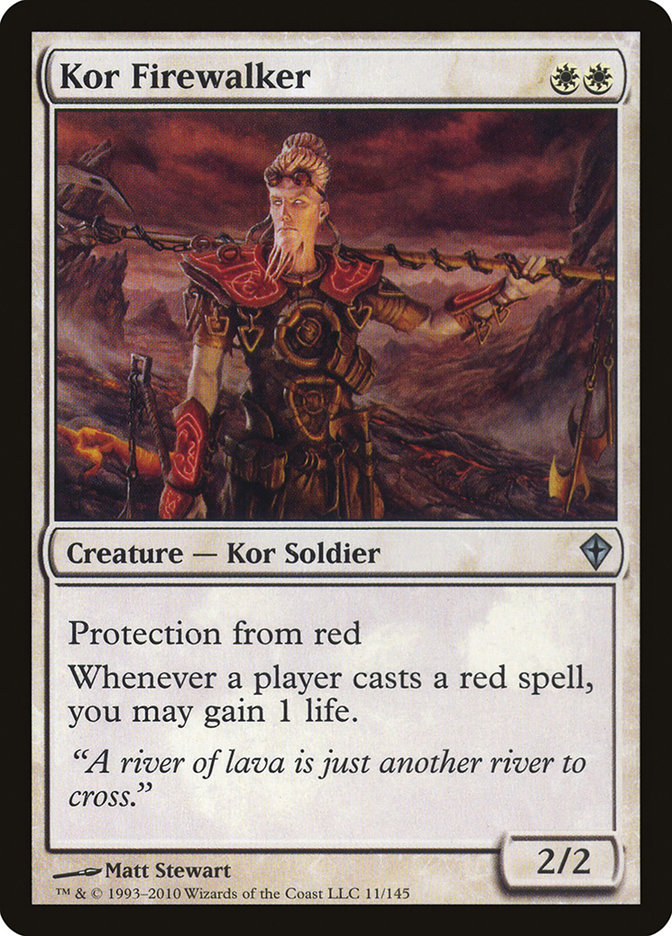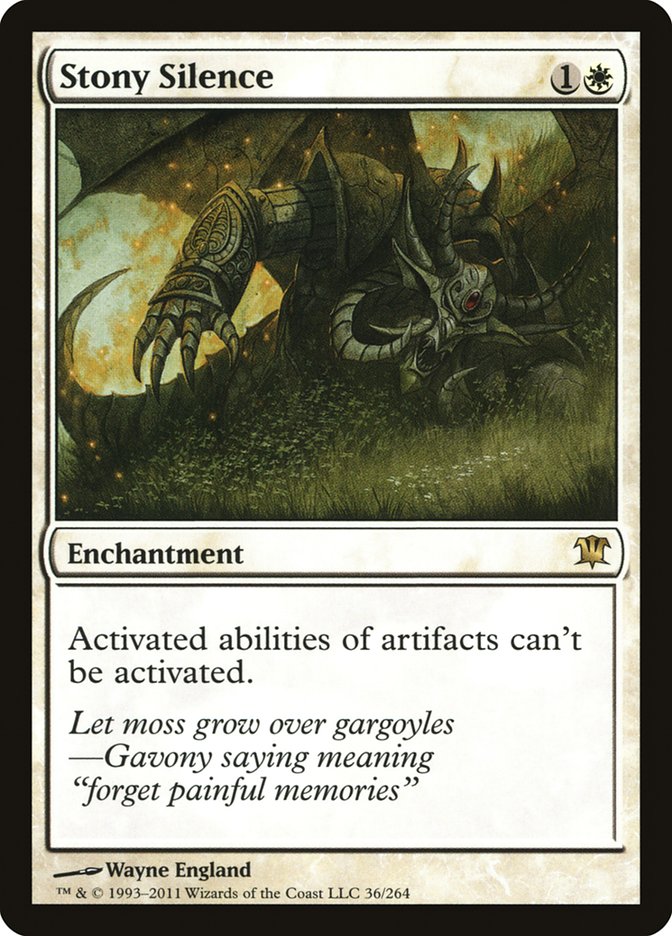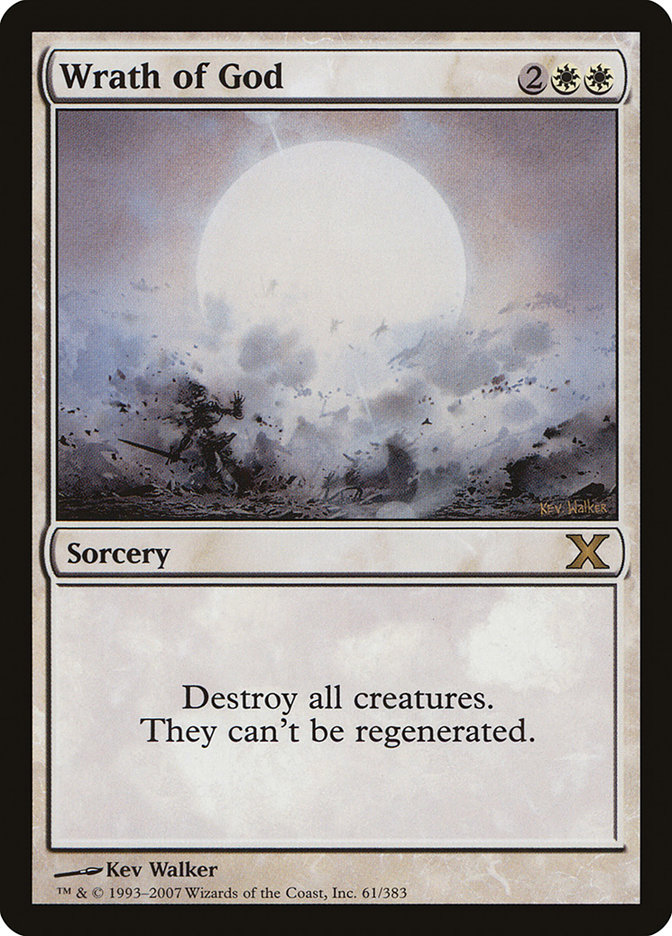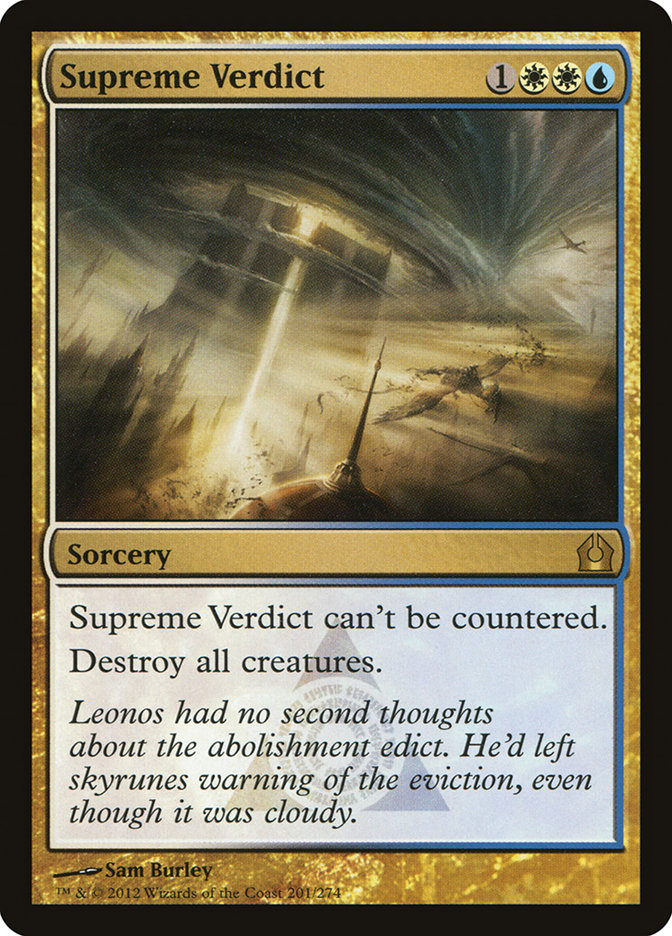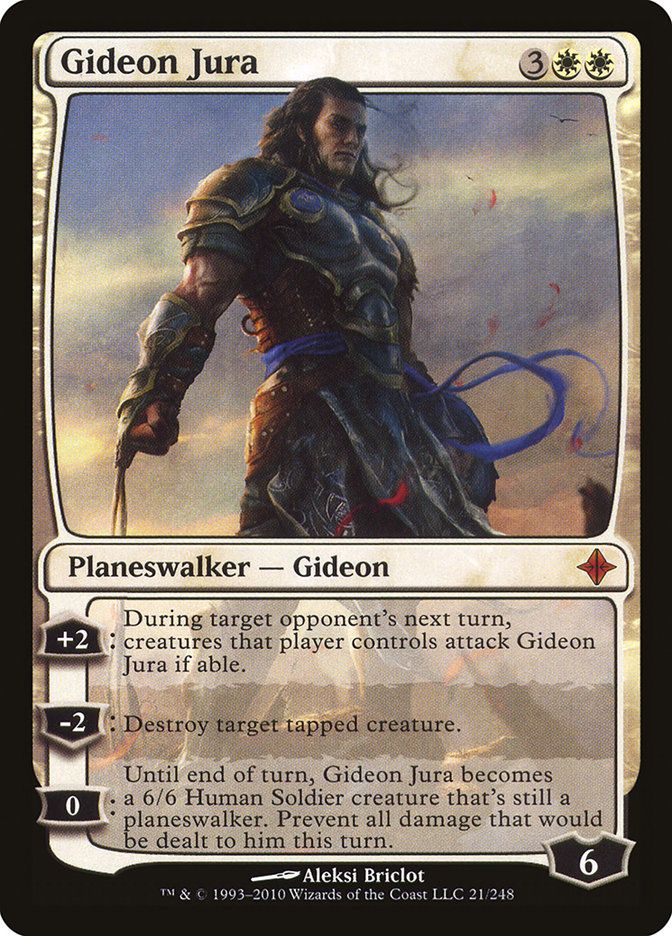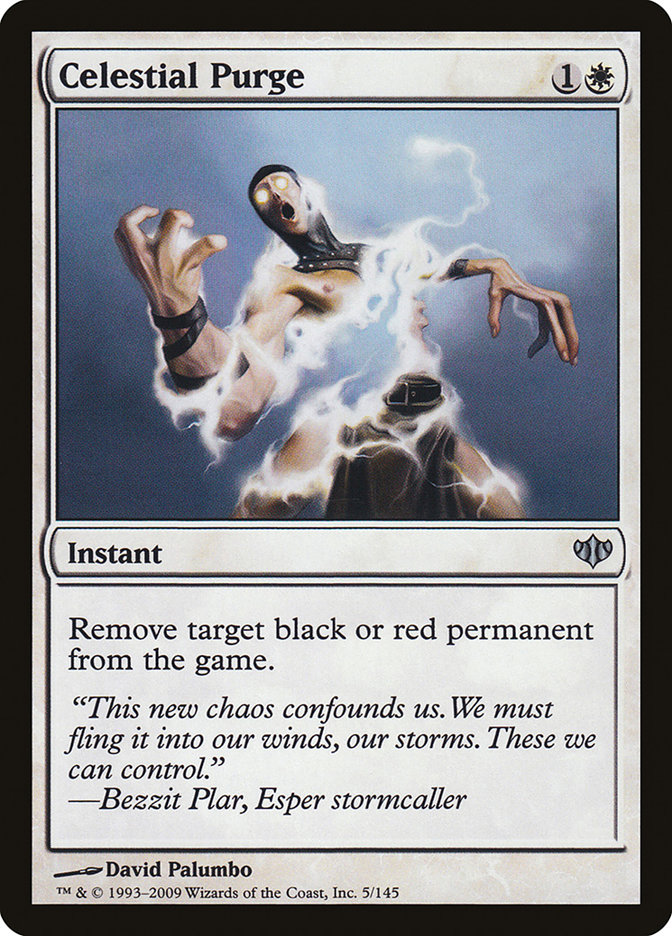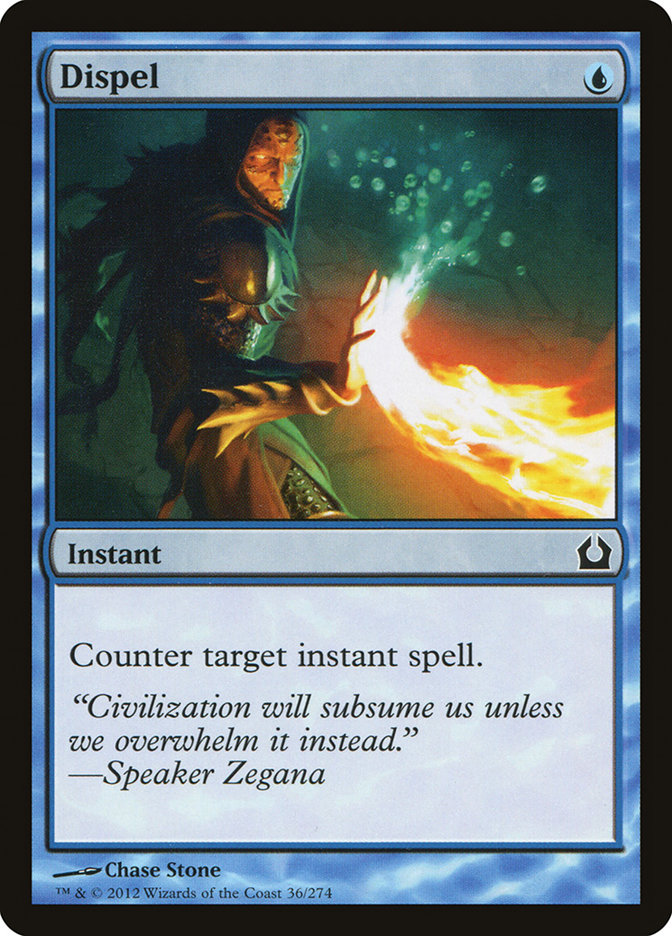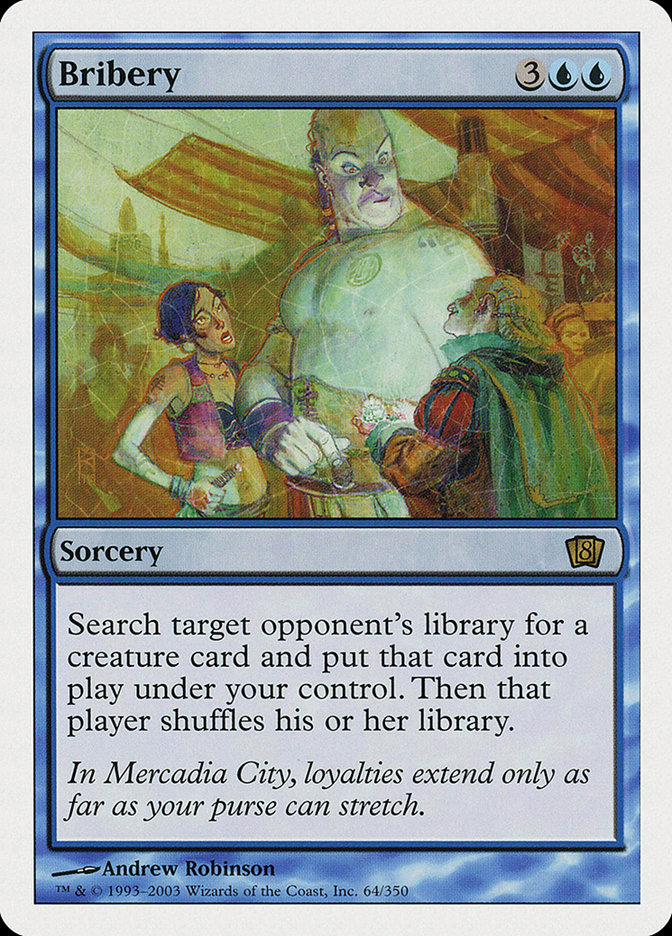I was so close!
The Open Series in Washington D.C. was the home of one of a rare StarCityGames.com Legacy Open and I almost took the title home. Fifteen rounds without a bye is something I am definitely not used to, and doing it in the Legacy format did not help the fatigue aspect. Anyone who has played Legacy knows how difficult decks with Brainstorm are to operate. Luckily for me I was piloting the tried-and-true masterpiece known as Esper Stoneblade, a deck Mike Flores picked on four years ago when I made my first Invitational Top Eight. He called it outdated, pointing out such winners as my one-of Intuition, singleton Tower of the Magistrate, and use of Blue Elemental Blast. He was right, as those cards became outdated very quickly in the now-competitive Legacy format. I watched Tom Martell win a Grand Prix, saw his decklist, and had to make it my own. My love for Lingering Souls wasn’t a secret and any Legacy deck that utilized the power of the Spirits had my undivided attention. I promised Mike at that Invitational to ditch Esper Stoneblade as soon as my favorite Magic shard became a losing deck in my hands. It’s now 2015 and I haven’t had to carry out that promise yet.
Control decks in Legacy don’t become outdated. They haven’t printed a better card than Brainstorm at one mana, a more efficient win condition than Stoneforge Mystic at two mana, or a better planeswalker than Jace, the Mind Sculptor at four mana. Nick Miller did some hard research on my Legacy card choices and noted that I was less than ten cards off from the list that I used to take down the Baltimore Legacy Open in 2012. That’s because the cards are so powerful that they survive shifting metagames and new releases and just need a little touching up when specific decks get more popular. When Shardless Sultai was popular, I ran two copies of Notion Thief in the sideboard. Lands is on the rise, which prompted the addition of a Telemin Performance and Rest in Peace over Surgical Extraction. A few superior cards were printed, so I had to do a few swaps from Terminus to Supreme Verdict, Council’s Judgment over Vindicate, and Dig Through Time over a Ponder/third equipment because of its tutoring capability. With these few upgrades and tight play, you can pilot Esper Stoneblade to victory against any Legacy foe. Don’t let the naysayers tell you that using Intuition for three Lingering Souls is a pipe dream, because it most certainly is not. But as much as I would love to talk Legacy, however, it’s time to set is aside (until the Season Three Invitational in a few weeks) and get Modern.
Creatures (8)
Planeswalkers (2)
Lands (22)
Spells (28)

The Open Series in Charlotte will be one of the last road trips for this veteran mage, as the school year is about to start up again and back to work I must go. The last Modern event in Charlotte, I crafted a pretty sweet Blink Riders deck, but we are going back to our roots for this one. In this week’s SCG Newsletter, I explained the benefit of adding black to the U/W Mentor list that I released a few days ago on the Shaheen Soorani Facebook page. I learned the value of testing new frontiers even when experiencing some success with the status quo. In other words, I was winning with U/W Mentor against most decks most of the time, but I was asked to give a third color a try in order to enhance the power level of the deck. I’m glad I did. Adding black gave this Mentor deck the raw power necessary to compete in the powerful combo versus consistent midrange versus punishing aggro metagame. It’s still a control deck in all aspects, but with a combo kill. The midrange title doesn’t apply to the deck with just four Monastery Mentor as threats, and it shouldn’t be played as such. Most of the time I won’t play the mythic win condition until I have stabilized the board with the various control tools at my disposal. I will hit them with an Inquisition of Kozilek, destroy their minions with Path to Exile, use Snapcaster Mage to repeatedly wreak havoc… and then, then, finally, play the Monastery Mentor.
At first I was nervous using only twenty-two lands, but it’s been the perfect amount. The mana was so consistent each game that I tested it with one Ghost Quarter and eventually upped it to two. Ghost Quarter is not only fantastic against Urzatron decks (where it is a combo with Surgical Extraction) but it also acts as a perfect removal spell against lands like Raging Ravine or Inkmoth Nexus that attack when necessary. It hurt me to cut all-stars like Gideon Jura from the maindeck, but playing just twenty-two lands called for some sacrifices in the top-end department. Other notable changes were mentioned in the newsletter, but here they are for reference:
- Dropped the land count from 23 to 22.
- Added one Dismember as the fifth Path to Exile.
- Cut the main deck sweepers for consistency.
- Added hand disruption instead of Spell Snare, because of similar reasons.
- Tasigur, the Golden Fang added as a powerful one-of to take advantage of a large graveyard.
- Added three Lingering Souls at first, but switched it to two and one Timely Reinforcements (which has been absolutely amazing).
- Sorin, Solemn Visitor has been added and gave the deck a finisher that demolishes any aggressive opponent.
Deciding whether to play U/W over Esper adds to the age-old dilemma of power over consistency. One thing experience has taught me is that the fairer a format is, the safer the card choices can be. When decks are able to kill by turn three, we have to take chances with the manabase in order to access adequate responses. Black gives us the power to kill (or at least make the game unwinnable for our opponents) quickly with Sorin, Solemn Visitor, to pull hands apart with Inquisition of Kozilek (especially with its partner-in-crime Snapcaster Mage), and offers us lasting threats with evasion in Lingering Souls. Power is required in this day and age in Modern, so the decision to switch after testing wasn’t too difficult. To prepare you all for this weekend, I’d like to give a brief explanation of the sideboard and my thought process for each option.
Sideboarding
He is an obvious red deck killer and necessary to solidify the matchup. Cards like Timely Reinforcements and Pulse of the Fields are good, however they have three-mana price tags and are often hard to push past a Skullcrack effect. The current maindeck has one copy of Timely Reinforcements, which has been fantastic in testing. Red decks don’t expect it game one, and the manabase is punishing enough to warrant a direct life-gain spell even in other matchups. Kor Firewalker aligns perfectly with the curve after sideboard to allow us to play it on turn two. If they attack, we just take it, untap and counter their Skullcrack when they attempt to blow us out. Don’t ever leave your trump card vulnerable unless your life is too low and you must block while tapped out.
This card seems narrow, but it is devastating for a multitude of decks. We all know that it shuts down Affinity, but we also sideboard it in against Ad Nauseam and Urzatron. This card is a hoser for all three of these decks, as it completely shuts down a huge part of their strategy and helps us defeat decks that have historically been a pain for control.
These were originally in the maindeck, but they just didn’t work well with the creature package. I love sweepers in any control deck, even those with a lot of creatures, but in Modern it’s different. There are just too many decks that either don’t have creatures or just play humongous threats that have to be dealt with one-by-one. For this reason, the sweepers made their residence in the sideboard. Instead of having two Supreme Verdicts I decided to use one copy of Wrath of God in the split. Wrath of God is more effective against Elves because of their three copies of Ezuri, Renegade leader and possible sideboard Thrun, the Last Troll. Supreme Verdict is still a house against any deck that dares to play Delver of Secrets, Geist of Saint Traft, or any Grixis Control deck with Gurmag Angler. The split has been working so far, but can easily morph to two of whichever mass removal spell you think would be more effective.
This is the fifth, more versatile, Inquisition of Kozilek. Thoughtseize hits a few cards that Inquisition of Kozilek can’t touch. In Legacy I don’t even bother with Inquisition of Kozilek, but in Modern we have to choose the spell that doesn’t deal us damage when cast. The use of shocklands provides us with a wonderful array of colors, however it also comes at a hefty cost. Most decks in Modern don’t mind blasting their life total to dangerous levels because they are setting up a combo or playing as the aggressors. We have to make hard decisions when building a control deck, and using Thoughtseize in the maindeck is simply not possible. Luckily for us in Modern most of the threatening cards cost three or less, so not much is sacrificed in the power level department.
The second-best planeswalker of all time has landed a spot on the bench. I tried him in the maindeck with twenty-two lands and I wasn’t able to consistently land him when required. He is also much less effective without mass removal, which is why he comes in with Supreme Verdict and Wrath of God. Gideon Jura is a must-have sideboard card versus any deck with Tarmagoyf, which is where he really shines. If you play against a deck that must defeat you with fragile creatures, Gideon Jura is your man. One-ofs in a deck with four Serum Visions, four Gitaxian Probe, and Snapcaster Mage are drawn surprisingly often, so don’t let the lack of card density frighten you. You’ll draw Gideon Jura and other sideboard cards more often than you think.
This is the best sideboard card in the entire deck and maybe even in Modern as a whole. Celestial Purge is the miracle removal spell that kills Dark Confidant, Liliana of the Veil, Tasigur, the Golden Fang, Blood Moon, Goblin Guide, Splinter Twin, and the list goes on and on. I sideboard this card in more than any other, and if I didn’t need the other bullets there would be more. Against decks with red, you must be sure to fetch the plains and island early in order to have access to the colors required to remove Blood Moon. This not only allows you to Purge a target straight-up, it would also allow you to play a Snapcaster Mage if that Celestial Purge was waiting in your graveyard. If you are playing a white deck and don’t have these in your sideboard, you’re making a huge mistake.
I prefer this card over Rest in Peace for a few reasons. The first is it works so well with Monastery Mentor and Snapcaster Mage. Having the ability to trigger some Monks and re-use it is great. The second reason is the amount we use our graveyard in the deck. Snapcaster Mage, mentioned prior, is pretty weak after a Rest in Peace. The other cards that suffer are Tasigur, the Golden Fang and Lingering Souls. Luckily for us, in Modern there are very few decks that destroy us with the graveyard and Surgical Extraction can usually get the job done against those that do linger around. The last added bonus to Surgical Extraction is the relationship between it, hand disruption, and Ghost Quarter. We can waste two cards to activate a Sowing Salt ability against Urzatron decks, or remove an Angel’s Grace with an Inquisition of Kozilek and demolish the combo with a coup de grace Surgical Extraction.
It took a while to sell me on this over alternative countermagic. I don’t like the super-narrow applications of Dispel when so many other counterspells exist, but at just one mana it has been very effective. I tried using three in the sideboard, then two, but I found it was just bad in multiples in too many situations. The one-of has been perfect to complement the five hand disruption spells, four Mana Leaks, and finisher Cryptic Commands. It comes in against red decks and the control mirror to help support the other spells when mana is tight.
You all know that my lists have to have something spicy to hedge against bad matchups, right? I built this list to defeat a diverse spread of decks that I expect to see in a huge tournament like the upcoming Charlotte Open. If I were to play this deck locally I’d play a second Bribery to railroad my Urzatron opponents with ease. Bribery is to Urzatron is what Telemin Performance is to Lands. They cannot win once this card is resolved as long as you had an Inquisition, Mana Leak, or some type of early interaction to make sure the coast is clear. I know they have Karn Liberated or Oblivion Stone as answers, however each time I steal Emrakul, the Aeons Torn the game immediately ends. This card is the haymaker of all haymakers, killing your opponent the very next turn. The beauty of Bribery is that they don’t see it coming and are occupied dealing with Ghost Quarter, Stony Silence, hand disruption and countermagic. Urzatron is such a historically bad matchup for traditional, fair control decks that I had to come up with something to tilt the scales our way; Bribery is that something. The other random application for the card is its use against all decks with Primeval Titan. Sometimes it’s just faster to kill them with a discounted Titan than our own spells, so sideboard it in whenever you see big creatures on the opponent’s battlefield.
I’ll see you in Charlotte my friends, and let’s all hope to see a control deck finally break through Modern!

